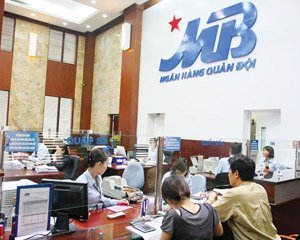VietNamNet Bridge – The so called “cross-ownership” has become so popular in the
banking sector (banks contribute capital to other banks to become founding
shareholders of the other banks).

On June 19, 2012, Maritime Bank (MSB) spent 220 billion dong to buy 15.228
million Military Bank’s (MBB) shares more. With the transaction, Maritime Bank
has raised the total amount of Military Bank’s shares it holds to 94,14,630
shares, or 9.411 percent of the bank’s chartered capital.
Prior to that, the MSB shareholders’ meeting approved the plan to allow the
board of directors to buy stakes of businesses and credit institutions with the
value of over 20 percent of MSB’s chartered capital (or 1.6 trillion dong).
At the 2012’s shareholders’ meeting of Eximbank, President Le Hung Dung said the
bank has injected 1600 billion dong in Sacombank already. Meanwhile, EIB has
received the shareholders’ authorization to represent 53 percent of shareholders
at Sacombank.
The State Securities Commission last month released a decision on imposing a
fine on the three big shareholders of Sacombank for their behavior of purchasing
1.8 million Sacombank’s shares without giving notice to the watchdog agency.
After that, people have found out that the new owners of Sacombank are all from
the banking sector, such as Eximbank, Southern Bank and Kien Long Bank.
The information that three commercial banks had new CEOs last week has stirred
up the public, because people believe that this is a move showing the
underground capital transfer in the banking sector.
Who are the real owners?
Analysts have noted that there are zigzag ownership relations in the banking
sector. However, the complicated and tortuous relations have not been clarified
yet, because commercial banks have their subsidiaries, associated companies
which also hold banks’ shares.
By May 17, 2012, the Saigon-Hanoi Securities Company (SHS) had reportedly held
3.74 percent of the Saigon- Hanoi Bank (SHB). Meanwhile, by December 31, 2011,
SHB had held 8.22 percent of capital at SHS.
Also, the relations of the “big bosses” of the banks remain questionable, since
the ownership relations have become more and more complicated.
Eximbank’s annual finance report in 2011 showed that the bank had the investment
deals in Rong Viet Securities (10.86 percent), Eximland (10.99 percent), Nha
Rong Insurance (9.45 percent), Viet Long Growth Fund (10 percent) and Saigon
Exim (11 percent).
The companies also contribute capital to each other. Nha Rong insurer, Rong Viet
securities and Saigon A Chau are the shareholders of Viet Long. Meanwhile,
Saigon A Chau is holding 10.51 percent of Rong Viet, 10.86 percent of Eximnbank
and 2.06 percent of Viet Long’s stakes.
If the miscalculation had not been made, which then led to the State Securities
Commission’s decision to impose fine on the involved parties, the case had not
been exposed to the public, and no one would have known that Saigon A Chau was
holding up to 5.01 percent, and Saigon Exim 5.17 percent of stakes of STB.
It remains a mystery about who are the real owners of the banks. The current
laws prohibit the behaviors of owning controlling stakes at credit institutions,
because this would harm shareholder’s benefits. However, it is very difficult to
discover the violations. The banks’ annual reports only give “vague” information
about the big shareholders and relating persons who hold more than 20 percent of
the stakes of the banks.
Source: DTCK
- © Copyright of Vietnamnet Global.
- Tel: 024 3772 7988 Fax: (024) 37722734
- Email: evnn@vietnamnet.vn